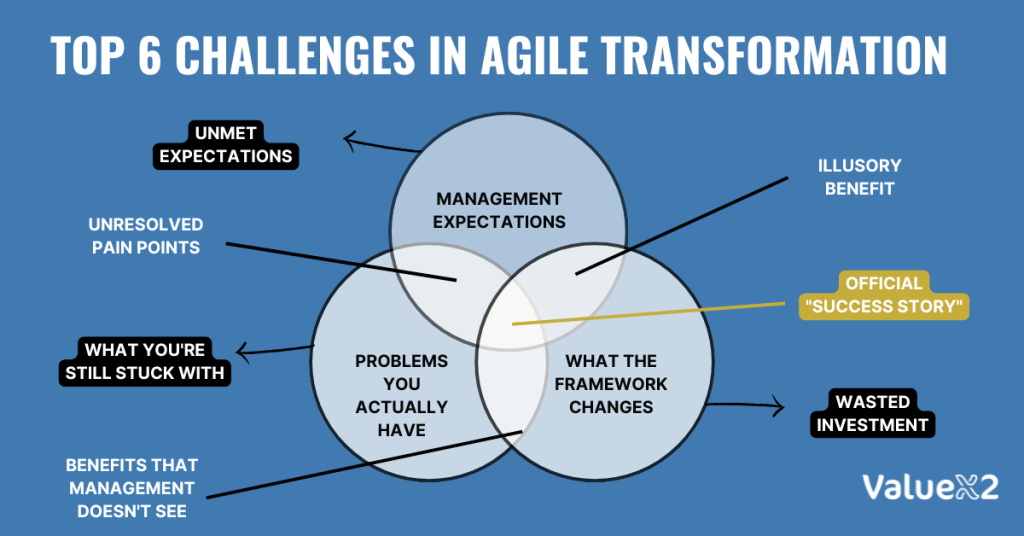Explore groundbreaking transformations in scaling scrum through real-world case studies!

Introduction
The dynamic market environment of current business brings the continued need for understanding and advancing the practices of scaling agile frameworks. One such framework known as Large Scale Scrum (LeSS) solves some of these challenges and makes the frameworks as simple as possible in managing complexities where large-scale teams engage in their work within large enterprises.
This blog aims to explain the Collection of LeSS Case Studies to explain how various organizations have evolved through agile. Whether you’re in a large corporation or a tech giant, these LeSS Agile case studies will amaze and motivate you on your Agile journey. If you’re still exploring how to choose the right scaled agile framework, this overview offers solid comparative insight.
What Makes LeSS Case Studies So Unique?
There is the LeSS (Large Scale Scrum) approach which is good for companies that need scaling of the agile frameworks across numerous teams, but at the same time does not complicate the scrum. LeSS Agile principles help an organization to adopt lean practices while being agile and assertively promoting a coherent and unified team at its core.
The provided Collection of LeSS Case Studies in Agile presents examples of how various fields have benefited from using this framework in their work and can act as a guideline for replication.
How Has LeSS Revolutionized Agile Transformation?
The LeSS collection includes case studies of agile transformation explaining how large organizations have made improvements to their processes using the LeSS concepts presented above. They show how the mentioned framework helps to identify and decrease the number of bottlenecks as well as improve the collaboration between the teams.
Case Study Examples:
- Telecom Giant (Name not revealed): It fasted the product delivery speed by 40%.
- Global Bank (Name not revealed): This has been done by improving resource utilization which has helped to give 25% cuts on overall project costs.
- YSOFT (Tech Giant): Increased coordination of operations amongst more than one team leading to better timings for delivery.
What Lessons Do These LeSS Case Studies Provide?
Here are a few important points that can be derived from each of the LeSS case studies applicable to agile followers and organizations. The LeSS workings encompass useful information on how to scale agile and unveil lean principles, you can understand the major details through Nexus vs. LeSS comparison. Less is a way of achieving better outcomes in large-scale product development on large-scale.
Key Lessons:
- The crucial necessity is to define lines of communication between the teams.
- The importance of making customers’ demands the top priority in each of the sprints performed.
- Leadership involvement in cultivating agility at the organization.
What Role Does AI Play in LeSS Agile Transformations?
The application of AI in modern societies that is experiencing rapid technological advancements cannot be understated, especially more to the realization that agile frameworks like LeSS.
AI helps reduce the time spent on routine tasks and provides valuable information to agile teams so they can make decisions faster. This is because when implemented with LeSS principles, AI increases the efficiency and flexibility of the different teams.
How Can LeSS Case Studies Guide Your Agile Transformation?
Third, the Collection of LeSS Case Studies brings examples of how different organizations from various industries adopted LeSS. These examples are useful to follow for companies that are striving for agile transformation to see the result of perfect scaling and cross-team collaboration.
These case studies enable you to understand what recommendations you can apply in your change process, in having an effective and efficient agile change process and what to avoid in the course of your transformation.
What Are the Common Challenges in LeSS Implementation?

On the same note, despite the various advantages provided by the LeSS Agile system, the approach is not entirely free from difficulties. For instance, the case studies demystify some of the challenges organizations implement when adopting LeSS, including, coordinating large cross-functional teams, transparency of work and secure leadership endorsement. Nevertheless, with the correct approach, organizations have been able to leap over these barriers thanks to consistent adherence to principles including, constant improvement, with a customer-centric approach as espoused by LeSS. Such difficulties apply on top of change management processes making it important to understand them so that your organization could effectively transition to LeSS.
How to Apply LeSS Working to Your Own Agile Journey?
What is even more important to understand is the fact that the You might also benefit from knowing LeSS workings, not theoretical; they are ways and means worked out in practice, which have been used in various fields of business. Thus, actual collaborators will be able to follow the LeSS principles to devise the methods of the progressive differentiation of complicated systems into agile procedures of product delivery. .
LeSS Case Studies Overview
| Company | Industry | Key Benefits | Outcome |
| Telecom Giant (Name not revealed) | Telecom | Speed improvement | 40% faster product delivery |
| Global Bank (Name not revealed) | Banking | Cost reduction | 25% reduction in project costs |
| YSOFT | Technology | Collaboration efficiency | Enhanced teamwork across 10+ teams |
FAQs
- What are LeSS case studies?
LeSS examples describe actual organizations that introduced large scale applications of agile using the LeSS approach.
- How does LeSS differ from other agile frameworks?
As with every framework derived from scrum LeSS does not complicate the basic scrum model and unlike some other frameworks which seem to add another level of difficulty it can scale up beyond individual teams.
- What are the core principles of LeSS?
The core set of ideas consists of:
- Customer orientation
- Lean approach
- Teamwork
- Frugality in growth
- Can AI be integrated with LeSS Agile?
Indeed, the combinations of use of AI tools help in automating activities and augmenting the decision-making in a way that agile transformations within the LeSS framework are effective.
- What industries benefit most from LeSS Agile?
Several industries have been practicing LeSS with high success including:
- Technology
- Telecom
- Banking
- Manufacturing industry
What’s More To Know?
Check out ValueX2’s future classes: like Agility in HR, SSM, SASM, SAFe POPM and others. These courses are ideal to meet the needs of ambitious professionals in whom the need to contribute as an agile leader emerges. These courses equip you with up to date knowledge and tools that can revolutionize your career. For people who want to grow in their existing area of practice as well as those who wish to make a career transition, these Agility courses are the right match. It would be wise not to miss the chance to keep you updated with the latest trends in the constantly developing atmosphere of agile practices!
Scaling Frameworks Detailed Guide
For further depictions and analyses of different scaling frameworks, check our Scaling Frameworks Insights page.
Conclusion
A collection of LeSS cases demonstrates how scaling scrum affects positive change within the business realms. LeSS has been implemented by most companies across the globe across industries and has been credited for faster deliveries, cost cutting and better working relations through its principles. These case studies are informative irrespective of whether you are a beginner or an experienced agile professional for scaling agile. Maybe, adopting LeSS Agile can be your ticket to a similar kind of change and transformation.

Bhavna is an Agile Coach and Consultant with 15+ years of experience in advisory, corporate finance, IT assurance, and operations at Big 4 and within the industry in the UK and India. She has recently been the CEO of a start-up where she implemented agile practices within HR, Marketing, and Product teams.
She is also a SAFe® Practice Consultant (SPC) and authorized instructor for ICAgile Agility in HR (ICP-AHR), Agility in Marketing (ICP-MKG), and Business Agility Foundations (ICP – BAF) training courses. She provides training for agile transformation to corporate, public, and private batches, as well as consulting for enterprise agile transformation.






